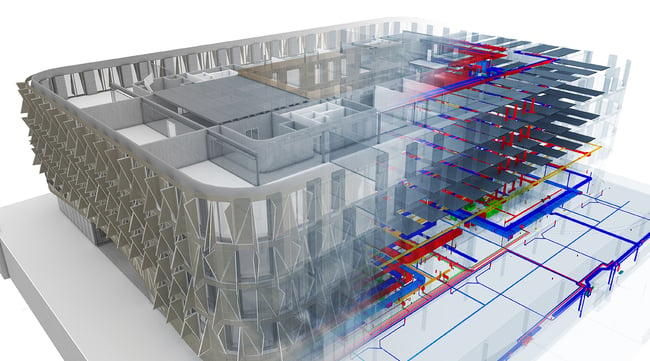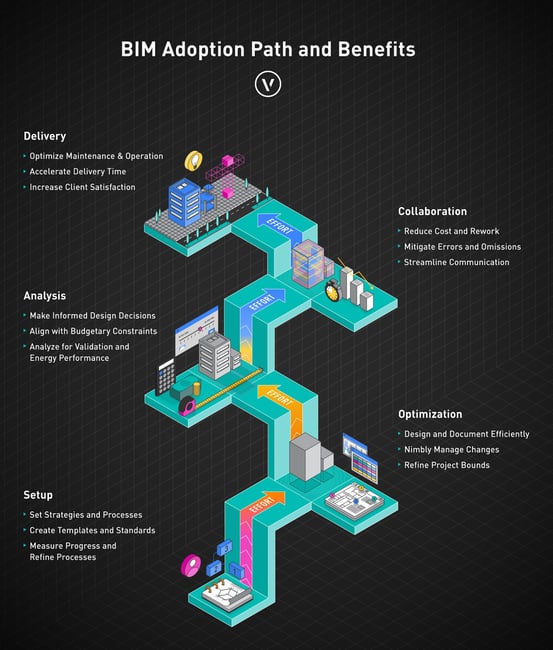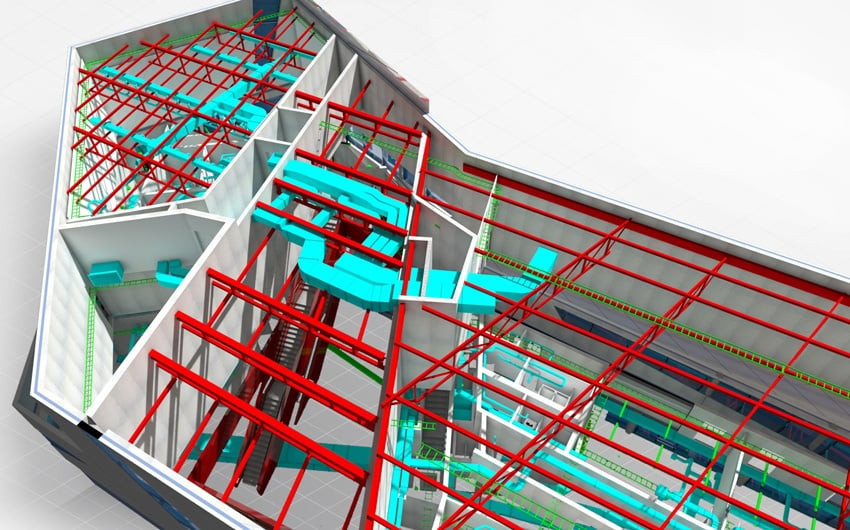Some firms avoid BIM methodology because they think it’s a complete overhaul of their established workflows and can be expensive and time consuming to implement. Rob Hollis, AIA, explains in this video interview that BIM doesn’t have to be that complex.
He says that BIM is just a method to organize and coordinate data associated with drawings, and that architects usually record this data in one way or another anyways. Things like materials, quantities, volumes, etc. have been a part of the architectural design process for ages.
Rather than a workflow reinvention, it’s a logical progression to ensure that this data is coordinated across drawings, models, and worksheets, and that that data is sharable with clients, consultants, and the project team.
“BIM is really the collection of geometry and data that’re combined and used to export and share with consultants or construction sets,” Hollis said. “It’s really just how much of that you’re using. You can use a little bit or you can use a lot; it depends on the particular needs of the firm, project, and client.”
He also states that there’s a good chance that those who avoid BIM are doing it to an extent anyway without even knowing it. “It’s because of how they’re using the software that there’s data inherently or automatically connected with geometry,” he said, emphasizing that BIM is really all about how much of that data needs to be reported.

BIM model of the Scott Headquarters project by Itten+Brechbühl
To illustrate:
A small firm of two or three architects can take advantage of BIM for their internal process to create project documentation and coordinate each part of the project more effectively. In this instance the 3D model wouldn’t be shared with consultants but only the 2D drawings they’d normally share.
Once they’re confident in doing this, they might take it to the next level to coordinate the project with consultants like engineering teams. Here the architects would export a model with appended data that the engineers can use to inform their work as well. This model can become the project’s central hub. Either method is still BIM, and either method helps inform the design process with data.
So, no, BIM doesn’t have to be too complex. BIM is adaptable and scalable. Each time you take the step towards a more integrated process, it can only bring value to the project and its stakeholders.

Interested in reading more about the adaptability of BIM? Check out our article that was featured on ArchDaily:
*Note: Rob Hollis' roll has changed since this video's filming. His current title is Solutions Team Manager.

.svg)





